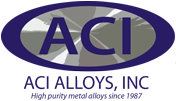Advantages of Using Indium Bonds
Indium bonding is an application of sputtering target bonding. If you’re looking for metallization techniques that enhance the quality of the bond in a major way, then consider this bonding application. Some advantages are:
Thermal Conduction & Durability
Indium bonding is very well-known and often used because of its powerful thermal conductivity. Because it has a greater resistance to high temperatures, the bond is also long-lasting.
Heat Extraction
The bond is an ideal and efficient way to eliminate heat from any target. Therefore, operators find it easier to work with the material.
Malleable
If you are looking for a bond that is more malleable than other bonding solders out in the market, indium bonding fits the bill quite nicely. By using a malleable bond, cracks and other common wear and tears—which could lead to issues and problems—are less likely to happen.
Low Melting Point
Some of the best bonds have a low melting point. The bonds must be able to remove stress when dissimilar materials cool to help lessen the extent of the damage caused by warping.
Finding the Right Bonding Manufacturer
Not all manufacturers provide the same results in regard to bond quality. Therefore, it’s best to choose the most reliable company.
In order to make sure you’re dealing with a quality bonding manufacturer, it’s advisable to check for the following:
- Experience. Pick a company that has been in the business long enough to know how to get things done and done right.
- Reputation. Chances are, if a company has already been around for more than a few years, they have built a reputation. Make sure that they have a good reputation, and if not, look elsewhere.
- Reliability. Choose a company that is known for its dedication, or one that has a history of providing quality results.
- Trustworthiness. Protect your business against unscrupulous providers. Ask around and look for companies that you feel you can trust.
ACI Alloys, Inc. has been manufacturing alloys, along with bonds, for the last 30 years. With 3 decades of experience, we are well positioned to provide you with everything you need for all of your manufacturing and processing applications. For more information, contact us today.
